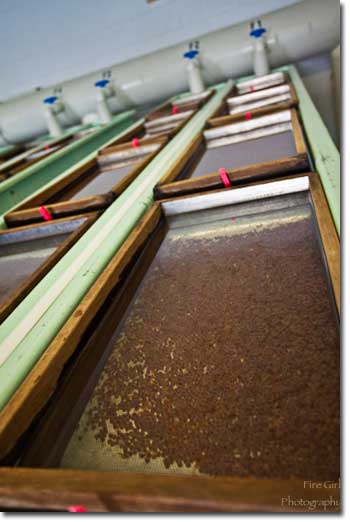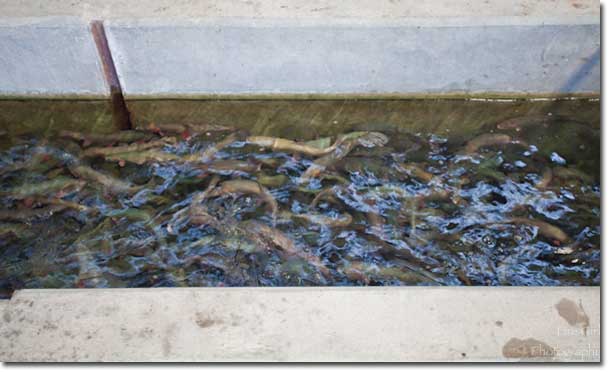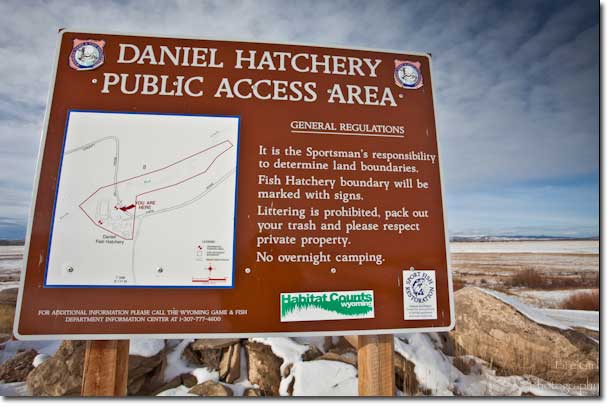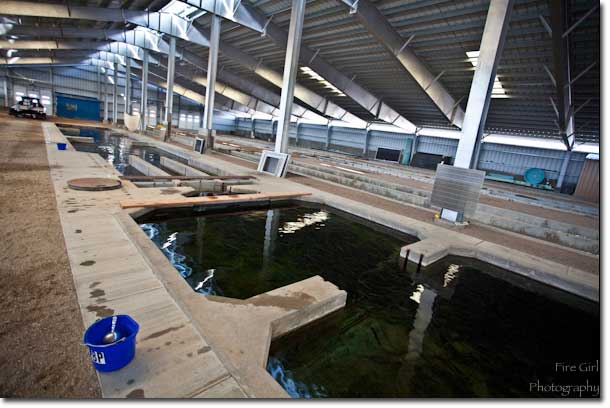I’ve driven past the Daniel Fish Hatchery on the way to Jackson many times and have had it on my list to explore since I drove down here for an interview this fall.
(Hatchery fish aren’t everyone’s cup of tea – I get it. That duly noted, Wyoming’s hatchery and stocking programs have done some very interesting, unique and positive things over the years and there are some powerful lessons to be learned here. This was just a social visit, not one to delve into management philosophy. I simply like fish.)
 Last week, Tim Kurtz and Greg Anderson, supervisor and assistant superior, respectively, were kind enough to let me come out, interview them (for the day job) and see what hatchery life is all about.
Last week, Tim Kurtz and Greg Anderson, supervisor and assistant superior, respectively, were kind enough to let me come out, interview them (for the day job) and see what hatchery life is all about.
The Daniel Hatchery is located about 17 miles outside of Pinedale, and started fish production in 1923. It’s located on the sizable Pape Ranches; the family donated the land to the Wyoming Game and Fish Department in 1917.
One thing about this area – there’s a lot of history. Old families, old places, and even older rivers and mountains.
The “fish arena,” as the guys like to call it, is a large brood stock / rearing unit built in 2000. From the outside, the building looks very much like a riding arena, but instead of barrels or jumps the inside is filled with raceways; home to a plethora of trout.
 The other main building of the facility is home to offices, an incubation room, feed room, and, of course, large tanks and elevated raceways which hold the smaller fish.
The other main building of the facility is home to offices, an incubation room, feed room, and, of course, large tanks and elevated raceways which hold the smaller fish.
This time of year is a bit slow for the crew, but I was able to take in Kokanee eggs, Bear River Cutts, Colorado River Cutts, Golden trout fingerlings, and various Cutts up to some four and five year old brood stock.
I think my favorite part of the day was looking into vats of Kokanee eggs, seeing a few little swimmers, and the remaining hundreds of eggs ready to hatch.
As we moved into the fish arena, Greg explained how new, wild blood is brought in to maintain the integrity of the brood stock. If a manmade or natural disaster hits an area – his example was the Yellowstone fires of ’88 – the brood stock can help to re-populate certain areas.
The guys work hard year round in spawning, rearing and stocking programs, making an effort to ensure that Wyoming fishing maintains the quality it’s been known for.
Thanks to the Daniel crew for sharing your expertise! I look forward to coming out again.




